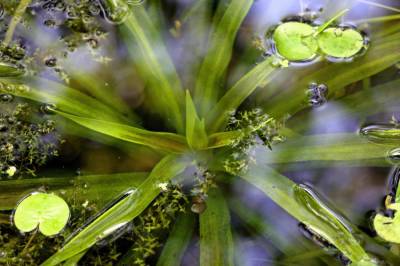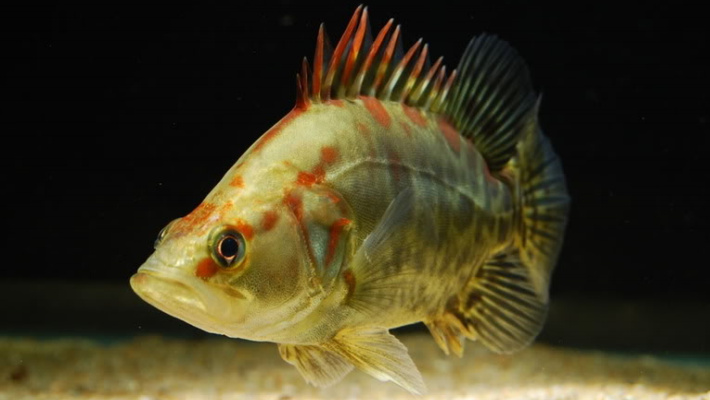|
General description
Aquatic
soldiers, Stratiotes aloides (Hydrocharitaceae), are floating plants that form often wide
plantations in river bays and floodplain lakes. It is assumed (e.g., Sugier et al., 2010) that common occurrence of
these plants may be considered to be evidence for good status of an aquatic
ecosystem and diversity of aquatic vegetation. According to Suutari et al.
(2009), occurrence of S. aloides indicates first of all the relatively low level of the water eutrophication.
S. aloides is one of the most
available aquatic substrates for macroinvertebrate colonization and can be used
as an indicator of valuable habitats in terms of macroarthropod diversity and
species richness (Suutari et al., 2009). In southern Finland (Suutari et al., 2009),
invertebrate communities in lakes with S.
aloides include 257 species of 10 taxa, at 23 species more than invertebrate
communities with the same taxa in lakes without these plants.
According
to faunistic studies (e.g., Kiss & Juhász, 1996; Linhart, 1999; Obolewski, 2005), numerous epiphytic and mining invertabrates
of 22-33 taxa inhabit rosettes of S.
aloides. Practically in all studied localities,
Chironomidae larvae are most abundant. The total abundance of phytophilous macroinvertebrates (> 300 μm) is
estimated (in Poland’s lake) to be 8,328 individuals per m2 for epiphytic
invertebrates and 11,800 individuals per m2 for all animals,
including mining Chironomidae that have 40% of all chironomid larvae found in
samples (Linhart, 1999). These numbers are higher than those given by Deák et
al. (2008) for Balaton. According to observations (e.g., Obolewski, 2005), biomass
of invertebrates can achieve 3-6 gr per 1 kg of fresh plants being determined by
large invertebrates, Gastropoda and Bivalvia first. 
Conservation
In southern
Finland,
lakes with S. aloides harbour more
species of conservation
priority than lakes
without these plants (Suutari et al., 2009). Such endangered species as Aeshna viridis, Leucorrhinia caudalis and
Leucorrhinia pectoralis (Odonata) are
strongly associated with S. aloides.
Females of A. viridis mainly lay eggs on the leaves of
S. aloides and occasionally on some other aquatic plants,
such as Typha spp. and Sparganium spp. (Matushkina & Gorb,
2003; Rantala et al., 2004). Adult dragonflies have been found occasionally by
water without S. aloides, but larvae
have only been recorded in lakes with these plants (Rantala et al., 2004). In
accordance with field and laboratory data of the same authors, this is possibly
because the spiny leaves of S. aloides protect effectively A.
viridis larvae against predatory fish (like perch, Perca fluviatilis).
Intraguild
predation of larvae of A. viridis
with larvae of sympatric A. grandis
and A. juncea is possible, with the
susceptibility of larvae of the first species (Suutari et al., 2004). This
conflict can be partially solved through spatial divergency, because larvae of A. viridis prefer inner parts of S. aloides rosettes. On the other hand (see
Suutari et al., 2004), A. juncea
prefer more oligotrophic and slightly acid waters. There
are also strong differences between the foregoing species on substrates for
oviposition (Matushkina & Gorb, 2003): females of A. grandis and A. juncea
prefer dead plant materials. In accessible literature sources, we have not
found direct indications on co-occurrence of A. viridis and A. grandis
larvae in the same S. aloides rosettes.
Owing to
the decline during last decades of S.
aloides in Europe due
to eutrophication and environmental
stresses (e.g., Roelofs 1991; Smolders et al. 1996), A. viridis become scarcer and disappear from many former
distribution areas (Sahlén et al., 2004).
Basic References
Deák C.,
Gór D., Lakatos G. 2008. Phytophilous macrofauna assessments in an important
aquatic bird area: The Kis-Balaton Protection System. Acta Zoologica Academiae Scientiarum Hungaricae 54 (Suppl. 1), 75–83
Kiss M. K.,
Juhász P. 1996. Species composition of zootecton associated with water soldier (Stratiotes aloides L.). Acta Biologica Debrecina Oecologica Hungarica
7, 183–189
Linhart J.
1999. Phytophilous macrofauna in the Stratiotes
aloides vegetation of the lake Lukie,
Poland. Acta Universitatis Palackianae Olomucensis,
Biologica 37, 67-76
Matushkina
N.A., Gorb S.N. 2003. Substrates for endophytic oviposition of some European
dragonflies (Insecta: Odonata). The
Kharkiv Entomological Society Gazette 10, 108-118
Obolewski
K. 2005. Epiphytic macrofauna on water soldiers (Stratiotes aloides) in Slupia River Oxbows. Oceanological and Hydrobiological Studies XXXIV, 37-54
Roelofs J.G.M. 1991. Inlet of alkaline river water into peaty lowlands: effects on water quality and Stratiotes aloides L. stands. Aquatic Botany 39, 267-293
Sahlén G., Bernard R., Rivera A.C., Ketelaar R., Suhling
F. 2004. Critical species of Odonata in Europe.
International Journal of Odonatology 7,
385-398
Smolders
A.J.P, Roelofs J.G.M., Den Hartog C. 1996. Possible causes for the decline of
the water soldier (Stratiotes aloides L.) in Netherlands. Archiv für Hydrobiologie 136, 327–342
Sugier P., Lorens
B., Chmiel S., Turczyński M. 2010. The influence of Ceratophyllum
demersum L. and Stratiotes aloides
L. on richness and diversity of aquatic vegetation in the lakes of mid-eastern Poland.
Hydrobiologia 656, 43-53
Rantala M.J.,
Ilmonen J., Koskimäki J., Suhonen J., Tynkkynen K. 2004. The macrophyte, Stratiotes aloides, protects larvae of endangered dragonfly Aeshna viridis against fish predation. Aquatic Ecology 38, 77-82
Suutari E., Rantala M.J.,. Salmela J., Suhonen J.
2004. Intraguild predation and interference competition on the endangered
dragonfly Aeshna viridis. Oecologia 140, 135–139
Suutari E.,
Salmela J., Paasivirta L., Rantala M.J., Tynkkynen K., Luojuma¨ki M., Suhonen
J. 2009. Macroarthropod species richness and conservation priorities in Stratiotes aloides (L.) lakes. Journal of Insect Conservation 13, 413–419
|








 SUBSCRIBE
SUBSCRIBE



